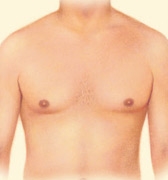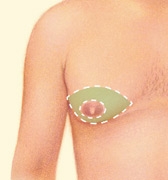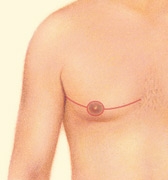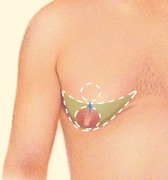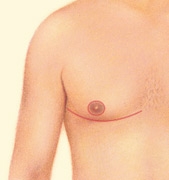Gynecomastia Correction
Gynecomastia is a condition of over-developed or enlarged breasts in men. It is common in men of any age. It can be the result of hormonal changes, hereditary conditions, disease or the use of certain drugs. Also known as breast reduction for men, gynecomastia procedures correct over developed breasts in men.
Consultation with Dr Philip Fleming is the best way to determine how gynecomastia correction can help you achieve your personal goals. Dr Fleming is certified by the American Board of Plastic Surgery, Inc and he has more than 25 years of experience in performing gynecomastia correction. The following is an overview of gynecomastia correction procedures.
Procedural Steps
What happens during gynecomastia correction surgery?
Plastic surgery to correct gynecomastia is technically called reduction mammaplasty, and reduces breast size, flattening and enhancing the chest contours.
In severe cases of gynecomastia, the weight of excess breast tissue may cause the breasts to sag and stretch the areola (the dark skin surrounding the nipple). In these cases the position and size of the areola can be surgically improved and excess skin may be reduced.
Anesthesia
Medications are administered for your comfort during the surgical procedure. The choices include intravenous sedation and general anesthesia. Your doctor will recommend the best choice for you.
Liposuction
In cases where gynecomastia is primarily the result of excess fatty tissue, liposuction techniques alone may be used.
This requires insertion of a cannula, a thin hollow tube, through several small incisions. The cannula is moved back and forth in a controlled motion to loosen the excess fat, which is then removed from the body by vacuum suction.
There are various liposuction techniques that may be used; the technique most appropriate in your case will be defined prior to your procedure.
Liposuction
Excision
Excision techniques are recommended where glandular breast tissue or excess skin must be removed to correct gynecomastia.
Excision also is necessary if the areola will be reduced, or the nipple repositioned to a more natural male contour. Incision patterns vary depending on the specific conditions and surgical preference.
Excision with Nipple Areola Graft
Sometimes gynecomastia is treated with both liposuction and excision.
Excision with Nipple Areola Graft and Nipple Areola Position Change
Will there be scars?
Any surgical treatment to correct gynecomastia will require incisions. While most incision lines are concealed within natural contours, some may be visible and are a necessary result of breast reduction surgery.





